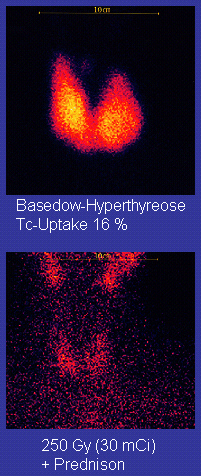Technetium-99m
Infobox isotope
| General | |-
| Symbol | Tc |- | Atomic Number | |- | Atomic Mass | |- | Neutrons | |- | Protons | |- | Nuclide Data |- | Half-life | 6.01 hours |- | Decay mode | |- | Daughter isotopes | |- | Spin | |- | Excess energy | |- | Binding energy | |
|---|
```
This template is designed for creating infoboxes for isotopes on a MediaWiki site similar to Wikipedia. It includes fields for general information about the isotope, such as symbol, atomic number, atomic mass, number of neutrons and protons, as well as specific nuclide data like half-life, decay mode, daughter isotopes, spin, excess energy, and binding energy. Additionally, it allows for the inclusion of appearance, uses, natural abundance, related isotopes, and other relevant information. The template also includes a stub notice encouraging users to expand the article, linking to the concept of a stub on the hypothetical WikiMD.
Technetium-99m (Tc-99m) is a metastable nuclear isomer of technetium-99 (Tc-99), which is used in a wide variety of nuclear medicine diagnostic procedures. It is one of the most commonly used radioisotopes in the field due to its ideal physical and chemical properties.
Properties[edit | edit source]
Technetium-99m has a half-life of approximately 6.01 hours, which is long enough to conduct diagnostic tests but short enough to minimize radiation exposure to the patient. It decays by isomeric transition to Tc-99, emitting a gamma ray with an energy of 140 keV, which is ideal for detection by gamma cameras.
Production[edit | edit source]
Tc-99m is produced from the decay of molybdenum-99 (Mo-99), which is typically generated in nuclear reactors. Mo-99 decays to Tc-99m with a half-life of about 66 hours. The Tc-99m is then extracted from a technetium-99m generator, which is a device that allows for the separation of Tc-99m from Mo-99.
Applications in Medicine[edit | edit source]
Tc-99m is used in a variety of diagnostic tests, including:
- Bone Scans: Tc-99m is used to detect bone metastases and other bone abnormalities.
- Cardiac Imaging: It is used in myocardial perfusion imaging to assess blood flow to the heart muscle.
- Renal Imaging: Tc-99m is used to evaluate kidney function and structure.
- Thyroid Scans: It helps in assessing thyroid gland function and detecting abnormalities.
Safety and Handling[edit | edit source]
While Tc-99m is generally considered safe due to its short half-life and the low energy of its gamma emissions, proper precautions must be taken to minimize radiation exposure to both patients and healthcare workers. This includes using the smallest effective dose and employing shielding and distance techniques.
Also see[edit | edit source]
| Nuclear Medicine | ||||||||||
|---|---|---|---|---|---|---|---|---|---|---|
This Nuclear medicine related article is a stub.
|
Search WikiMD
Ad.Tired of being Overweight? Try W8MD's physician weight loss program.
Semaglutide (Ozempic / Wegovy and Tirzepatide (Mounjaro / Zepbound) available.
Advertise on WikiMD
|
WikiMD's Wellness Encyclopedia |
| Let Food Be Thy Medicine Medicine Thy Food - Hippocrates |
Translate this page: - East Asian
中文,
日本,
한국어,
South Asian
हिन्दी,
தமிழ்,
తెలుగు,
Urdu,
ಕನ್ನಡ,
Southeast Asian
Indonesian,
Vietnamese,
Thai,
မြန်မာဘာသာ,
বাংলা
European
español,
Deutsch,
français,
Greek,
português do Brasil,
polski,
română,
русский,
Nederlands,
norsk,
svenska,
suomi,
Italian
Middle Eastern & African
عربى,
Turkish,
Persian,
Hebrew,
Afrikaans,
isiZulu,
Kiswahili,
Other
Bulgarian,
Hungarian,
Czech,
Swedish,
മലയാളം,
मराठी,
ਪੰਜਾਬੀ,
ગુજરાતી,
Portuguese,
Ukrainian
Medical Disclaimer: WikiMD is not a substitute for professional medical advice. The information on WikiMD is provided as an information resource only, may be incorrect, outdated or misleading, and is not to be used or relied on for any diagnostic or treatment purposes. Please consult your health care provider before making any healthcare decisions or for guidance about a specific medical condition. WikiMD expressly disclaims responsibility, and shall have no liability, for any damages, loss, injury, or liability whatsoever suffered as a result of your reliance on the information contained in this site. By visiting this site you agree to the foregoing terms and conditions, which may from time to time be changed or supplemented by WikiMD. If you do not agree to the foregoing terms and conditions, you should not enter or use this site. See full disclaimer.
Credits:Most images are courtesy of Wikimedia commons, and templates, categories Wikipedia, licensed under CC BY SA or similar.
Contributors: Kondreddy Naveen, Prab R. Tumpati, MD



